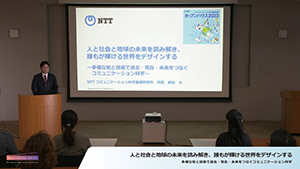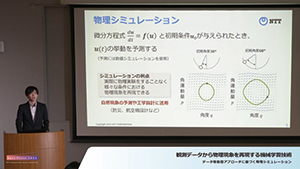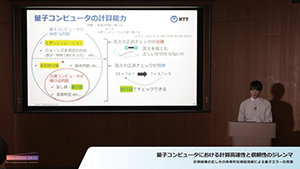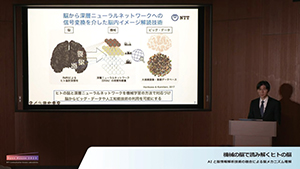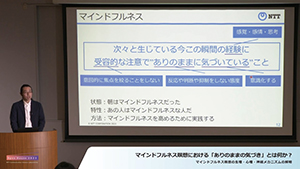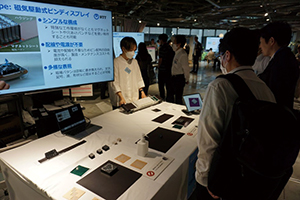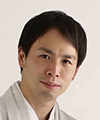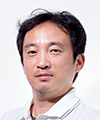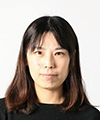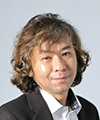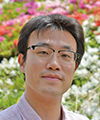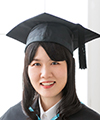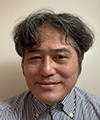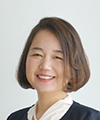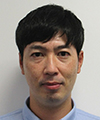 |
|||
|
|
|||
|
Information Vol. 21, No. 11, pp. 53–58, Nov. 2023. https://doi.org/10.53829/ntr202311in1 Event Report: NTT Communication Science Laboratories Open House 2023AbstractOn 1 and 2 June, NTT Communication Science Laboratories (CS Labs) hosted the Open House on-site for the first time in four years. We presented 6 talks and 16 exhibits of our latest research efforts in information and human sciences at the event, attracting more than 400 visitors over the two days. We also featured videos of the talks and exhibits on the Open House 2023 website, which received over 3000 views in 20 days after the event. Keywords: information science, human science, artificial intelligence 1. OverviewSince the founding of NTT Communication Science Laboratories (CS Labs), we have been engaged in research centered on the pursuit of science that can deepen our understanding of humans and the creation of technologies that approach and exceed human abilities to achieve heart-touching communication between people and between people and machines. We hold the Open House annually for people to experience our latest research results. However, for the three years from 2020 to 2022, the event was not held on-site due to the COVID-19 pandemic. Instead, we showcased videos of talks and exhibitions of our research on the Open House website [1]. This year, we held the Open House on-site for the first time in four years, and as a new trial, we held the event at a new venue QUINTBRIDGE, an open-innovation facility of NTT WEST. We introduced a reservation system to ensure the safety and comfort of all participants, and thankfully, the number of reservations reached a maximum of 500 in less than two weeks after the start of reservations. Unfortunately, the second day of the event was hit by heavy rain due to a typhoon; however, approximately 420 people from various companies, research institutions, and universities attended the event at the site. As we did last year, we made videos of the talks and exhibitions available on the Open House website, which were viewed more than 3000 times in 20 days after the event. 2. Keynote speechDr. Futoshi Naya, vice president and head of CS Labs, presented a speech entitled “Design a world where everyone can flourish by deciphering the future of people, society, and the Earth – Communication science that connects the past, present, and future through diverse knowledge and technologies –”, in which he introduced some of the CS Labs’ recent efforts in research centered on human science and brain science for a deep understanding of people and research on media processing and machine learning that approaches and surpasses human capabilities from the perspective of deciphering individuals, society, and the Earth (Photo 1).
He first gave an overview of the mission and research areas of CS Labs, and outlined individual research projects, classifying them into three categories: attempts to read “individuals,” “society,” and “the Earth”: mind-reading technology to decipher the latent state of mind from people’s unconscious physical movements and physiological reactions as attempts to decipher individuals; understanding the well-being of individuals and society in the COVID-19 pandemic and beyond as attempts to decipher society; and simulation of complex physical phenomena using new machine-learning technology that uses vast amounts of observation data as attempts to decipher the Earth. He concluded his speech by describing the direction of our future research based on the concept of ‘designing the future’ and declared that we would continue our research to design a better future world where everyone can shine at any time in their own way. 3. Research talksThe following four talks highlighted recent significant research results and high-profile research topics. Each talk presented some of the latest research findings with a background and overview of the research field. 3.1 “Machine learning that reproduces physical phenomena from data – Physics simulation based on a data-driven approach –”: Dr. Yusuke Tanaka, Innovative Communication LaboratoryDr. Yusuke Tanaka introduced machine-learning techniques for accurately reproducing physical phenomena from observed data using physical laws as prior knowledge. While machine-learning models are highly expressive for potentially representing complex physical phenomena, obtaining an appropriate model that accurately reproduces the target physical phenomena from the vast search space of models is challenging. To solve this problem, he proposed a technique for automatically constructing machine-learning models from data that satisfy one of the most fundamental physical laws, the energy conservation law, by incorporating the theory of Hamiltonian dynamics (a formulation of analytical mechanics) into Gaussian processes (a model of machine learning). He also envisioned the application of this technique to weather forecasting and improving the accuracy of engineering designs for aircraft and automobiles (Photo 2).
3.2 “Dilemma between quantum speedup and computational reliability – Overcoming errors by efficient verification methods for quantum computing –”: Dr. Yuki Takeuchi, Media Information LaboratoryDr. Yuki Takeuchi introduced the dilemma that quantum superposition, a fundamental principle of quantum mechanics, makes verifying calculation results on quantum computers difficult and showed a way to avoid this dilemma. While ordinary computers represent information using bits that take the value 0 or 1, quantum computers use quantum bits (qubits) that take the state of a probabilistic superposition of 0 and 1. The use of qubits enables high-speed parallel processing that is difficult to reproduce using ordinary computers; however, calculations using qubits are vulnerable to errors because the results can change significantly with minute changes in probability values, and their complexity makes it difficult to verify the results of calculations using ordinary computers. To address this issue, Dr. Takeuchi proposed new verification methods using small-scale quantum devices. He also suggested that the proposed methods could enable quantum computers to be cloud-based and used worldwide via the Internet (Photo 3).
3.3 “Decoding the human brain through machine brains – Unraveling brain mechanisms through integration of AI and neural information analysis techniques –”: Dr. Tomoyasu Horikawa, Human Information Science LaboratoryDr. Tomoyasu Horikawa gave an overview of research on brain decoding, which decodes latent information in the human mind from brain activity, and introduced approaches based on the latest artificial intelligence (AI) technology for understanding the brain mechanism that generates the human mind. For instance, by associating fMRI (functional magnetic-resonance imaging) signals representing brain activity with latent states of deep neural networks (DNNs), an AI technology that has attracted much attention, he showed the similarity between brain activity and DNN behavior and the possibility of reconstructing images that humans see or imagine from brain information. He concluded his talk by mentioning the possibility of reconstructing senses other than sight, such as hearing and touch, from brain activity if AI technology and brain information analysis technology were further linked (Photo 4).
3.4 “What is the lucid awareness in the mindfulness meditation? – Investigation of the physiological, psychological, and neural mechanisms of mindfulness meditation –”: Dr. Masahiro Fujino, Human Information Science LaboratoryDr. Masahiro Fujino introduced the definition of mindfulness, which is attracting attention to achieve well-being, and then explained how mindful meditation affects our mind and body from the perspective of physiological, psychological, and neural mechanisms. People are said to be “mindful” if they recognize their own present experience as it is. Mindfulness meditation is one method for achieving mindfulness and consists of two meditation techniques: focused attention meditation and open monitoring meditation. In this talk, Dr. Fujino showed how open monitoring meditation influences the achievement of mindfulness by measuring its effects on autonomic nervous activity, hormone secretion, attention control processes, and brain activity. He also mentioned that the results could help develop more effective methods for achieving mindfulness (Photo 5).
4. Research exhibitionsThe Open House 2023 featured 16 exhibits displaying CS Labs’ latest research results. We categorized them into four areas: Science of Machine Learning, Science of Communication and Computation, Science of Media Information, and Science of Humans. Each exhibit was presented on-site by researchers from CS Labs (Photo 6) and showcased a short overview video on the event web page. The following list, taken from the event website, summarizes the research exhibits in each category.
4.1 Science of Machine Learning
4.2 Science of Communication and Computation
4.3 Science of Media Information
4.4 Science of Humans
5. Special lectureWe invited Dr. Akira Takagi, director of Hearing and Speech-language Center, Shizuoka General Hospital and professor of the Shizuoka Graduate University of Public Health, to CS Labs to give a special lecture entitled “Spoken language acquisition through electrical stimulation” and conduct a discussion with CS Labs researchers. Humans use various modes of communication, such as spoken, written, and signed language; however, spoken language is considered the most efficient mode of communication in terms of body structure and physiology. Auditory perception is necessary for humans to acquire spoken language, but more specifically, humans will only fully develop spoken language if they are provided with auditory stimulation by age three, which is the sensory period. In human hearing, sound vibrations are converted into electrical signals in the Organ of Corti of the inner ear, and only then are sounds transmitted to the brainstem. However, even if the Organ of Corti is congenitally absent or its electrical signals are feeble, humans can fully acquire spoken language if they receive a cochlear implant, a device providing electrical signals to the inner ear, by the time of the sensory period. Cochlear implants have been used worldwide since 1985 when the US Food and Drug Administration approved a 22-channel cochlear implant for adults over 18 for trial use. In this talk, Dr. Takagi explained the efforts of cochlear implantation in Japan and worldwide and introduced the speech and language acquisition process of cochlear-implant recipients using videos and data. At the end of the talk, he suggested that research on how sensory integration is formed during the brain’s receptive period could contribute to future brain cognitive science and AI research. 6. Concluding remarksThe Open House 2023 was the first on-site event in four years, and many people could see the latest research results from CS Labs through on-site exhibits and videos on the special website. CS Labs’ researchers were also inspired by direct communication with visitors to the event. As a new trial this year, we used the NTT WEST open-innovation facility QUINTBRIDGE, and we believe that this environment facilitated very active communication. We would like to express our sincere thanks to everyone who helped make this event possible. Reference
|
|||









